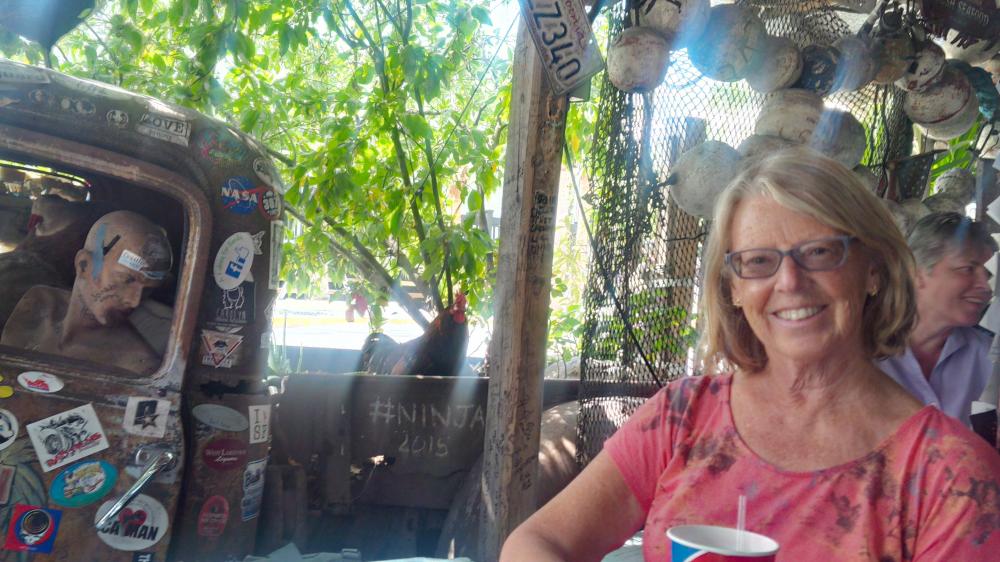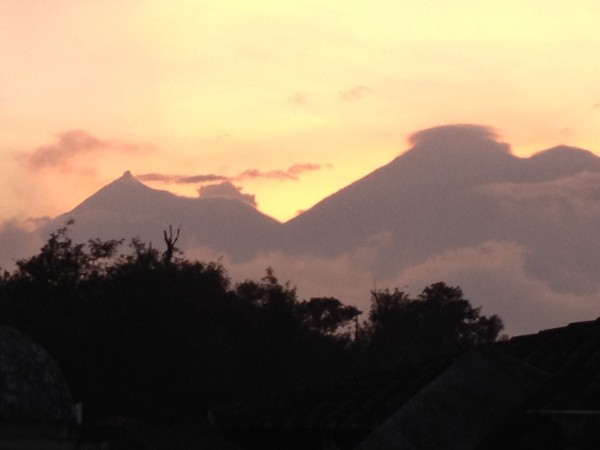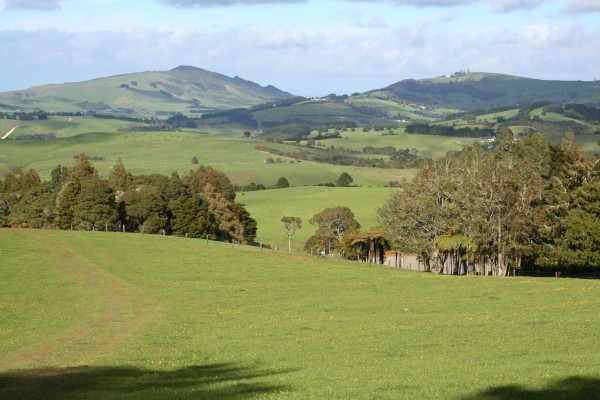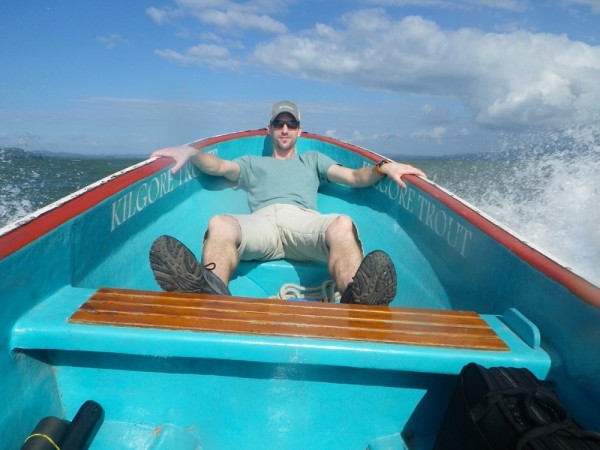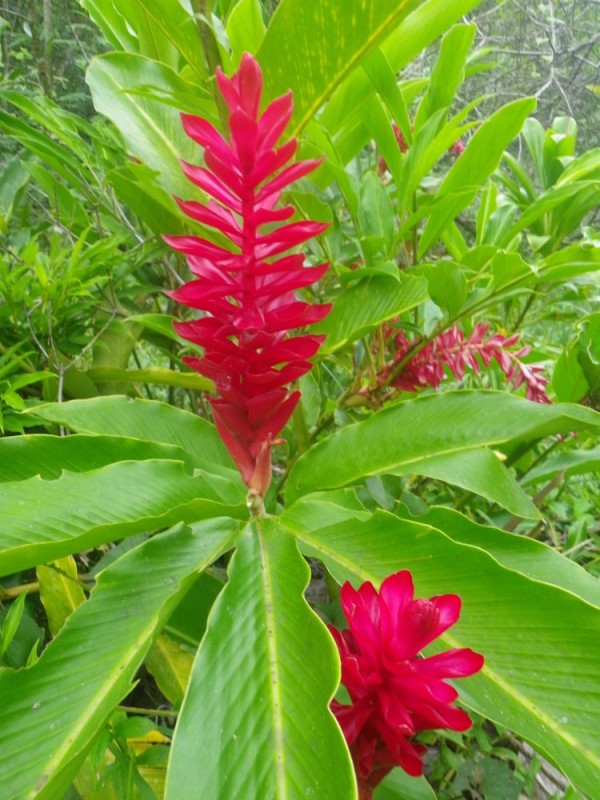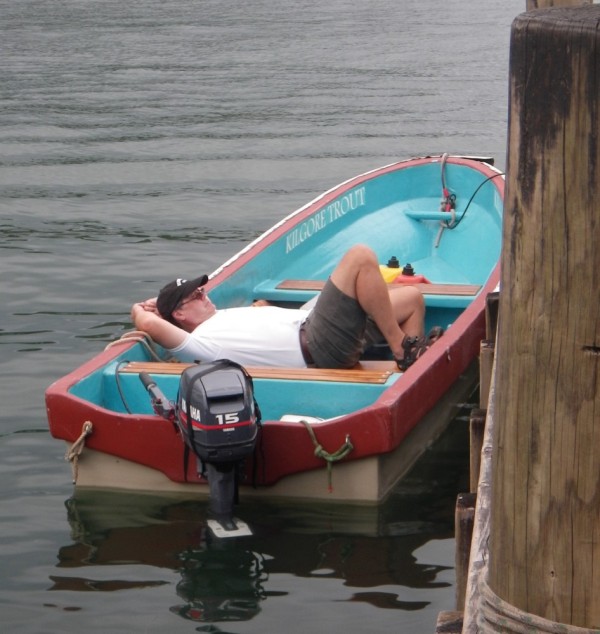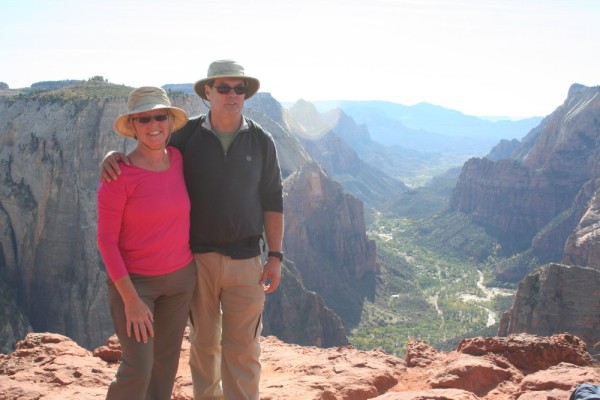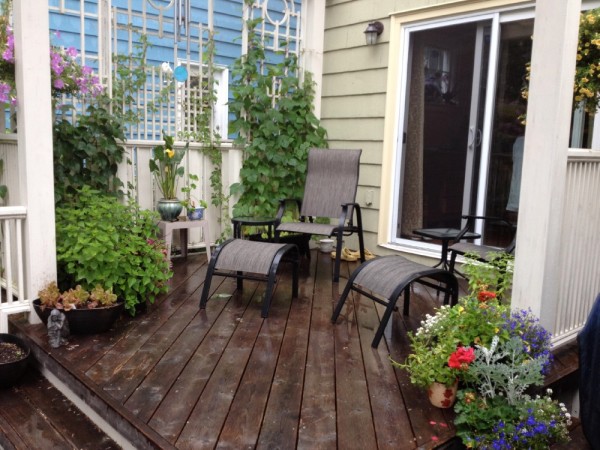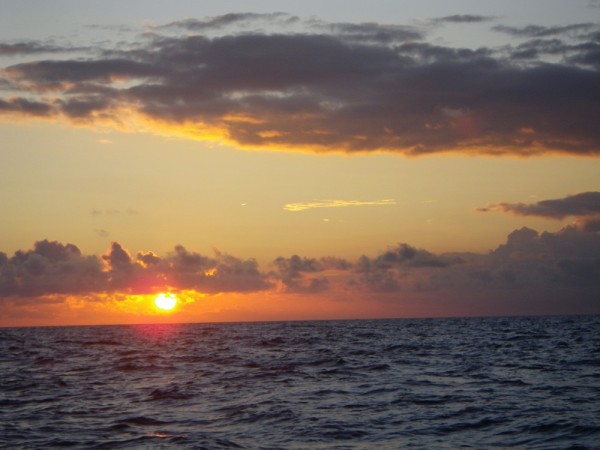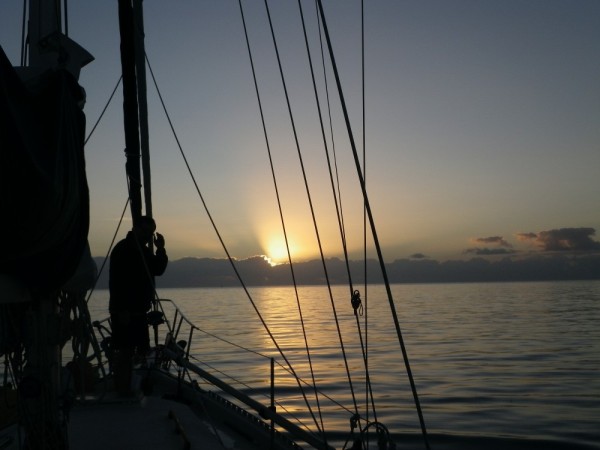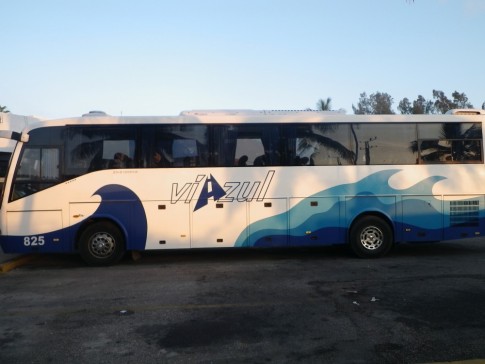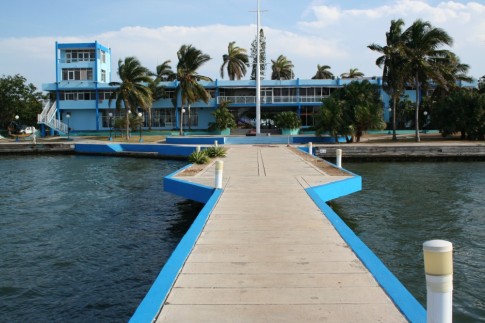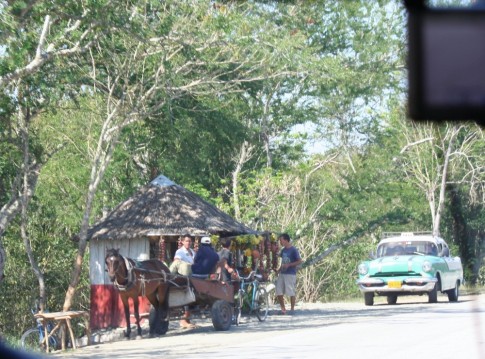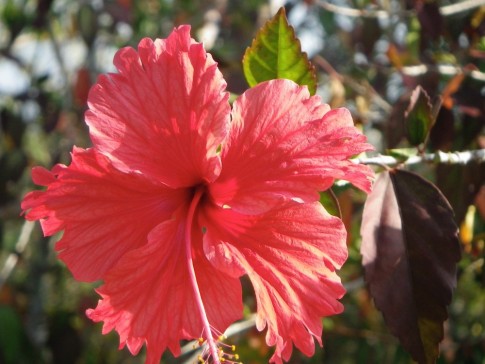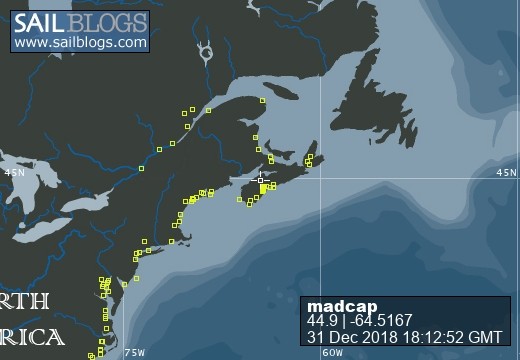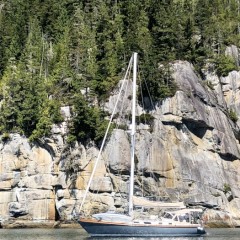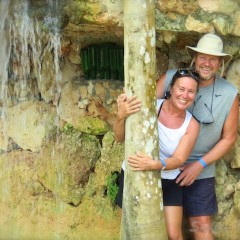
Madcap Sailing
31 December 2018 | Gold River Marina, Nova Scotia, Canada
06 August 2018 | Mahone Bay, Nova Scotia
15 June 2018
26 May 2018 | Gold River Marina, Gold River, NS
18 May 2018 | Gold River Marina, Gold River, NS
24 March 2018 | boat in Gold River, NS and crew in Halifax
22 May 2017 | Whittaker Creek, Oriental, NC
15 May 2017 | Boat in Oriental, crew in New Orleans and Nova Scotia
26 April 2017 | Oriental, NC
26 April 2017 | Oriental, NC
23 April 2017 | Oriental, NC
20 April 2017 | Ocean Isle Marina, Ocean Beach, NC at Mile 335.6
17 April 2017 | Dewees Creek, near Charleston, NC
14 April 2017 | St Simons Island
12 April 2017 | Fernandina Beach, FL
11 April 2017 | St Augustine, FL
07 April 2017 | Vero Beach, Florida
04 April 2017 | Ft Pierce
03 April 2017 | Ft Pierce, FL
30 March 2017 | Ft Pierce, Florida
Safe Anchorages and Challenging Shoals
21 November 2007 | Fernandina Beach, FL
Beth - in hot weather again
In between the towns and cities, we have stayed in several beautiful anchorages. Today, having spent the last three nights in such places, seems like a good time to tell you about some of them.
These are not like the anchorages we were used to in the Thousand Islands, or Maine - surrounded by rock and trees - nor are they like the first few we encountered in the ICW - in a bight just off the channel. They are tucked away in the marshes. We motor along a little channel up a creek or down a narrow river. There is usually a significant tide (7 -8 ft) so we check to see just where the tide is when we stop, making sure that we don't go aground when it goes down, and that we have enough chain out to hold us when it goes up. There is rarely enough high vegetation to protect us from wind, but then again, it's been awhile since we had any real wind overnight.
These marshes are all golden and teeming with life. There are pelicans and egrets, blackbirds and grackles, terns and gulls, fish, dolphins, alligators (we hear about although we haven't seen any more since our first one). The water and sky are blue, the mud a rich brown. It smells marshy - not unpleasant - just earthy. There are a few fishing buoys, little boats carrying fishers with their rods and reels, and large shrimp boats with their net laden arms stretched wide and masses of birds flying around or perched on every line or rail. Some fast little boats go speeding by with a man and a dog off for a day's hunting and gathering. When we do find trees, they are massive live oaks, pecans, palmettos, pines - often dripping with Spanish Moss. It is not a parasite, and does not damage the trees. It survives on moisture from the air.
We stopped in the Wahoo River on our first night after leaving Isle of Hope, and enjoyed a very fine happy hour on Strathspey. Paul, Deb and Ginny (Deb's adventurous mother) (Werplayin), Jim (Bees Knees), Nancy and Bruce (Seabird) and Jim and Jeannie (Estelle), and Jim and I joined Mary and Blair in their spacious cockpit. Blair produced his guitar and we all sang a rousing rendition of Johnny Mercer's Moon River in honour of our crossing it earlier in the day. We picked up Jim and Jeannie on the way over, and it didn't take more than a minute and a half for Madcap Jim (Bissell) and Jeannie to discover that they were both at Mount Allison during the same years, and they both carry lingering negative memories of one particular fellow student. It was really too funny for words and Jim (Lea) and I rolled our eyes as the stories flew.
The next morning, Bees Knees and Seabird departed first, very kindly radioing back information on depths for those of us with deeper keels. Not for the first time, we decided to delay our departure till the tide rose a bit and we would be able to move without quite so many anxious looks at the depth sounder. The updated information in our 2007 copy of Dozier's Waterway Guide proved to be accurate and was supported by the findings of our fellow sailors.
We explored parts of Fort Frederica at the next day's stop - along the bank of the Frederica River. There is not much there in the way of buildings any more - the remains of the magazine on the bank of the river, some tabby walls and outlines of where buildings used to be. Tabby - not as in cats. Tabby is the enduring substance used "back in the day" to build houses and walls around these parts. It is a mixture of oyster shells, lime (made from burning piles of shells), sand, and water that was poured into molds. It was usually covered with stucco and whitewashed. Now, it looks like a porous jumble of shells but in many places, has had the staying power to last through hurricanes, floods and fires.
Pecan trees abounded and we picked up handfuls to munch as we walked. They took serious man-fingers to crack open. There were also heavily laden orange trees and Bruce (Seabird) generously peeled one and offered it to Nancy and me. Just as I was about to pop a section into my mouth, his kind nature overcame his mischievous side and he said, "Just try one little bite at a time." These beautiful little oranges were SOUR. One would have to be very concerned about scurvy to eat them - or use up a good portion of the sugar ration. Jim (Bees Knees) told us that the purpose of the trees was not to provide fruit, but so that the fragrant blossoms would overpower the less than fragrant scent of unwashed bodies and primitive sanitation systems.
There were several familiar boats anchored here and we all took advantage of the opportunity to stroll around. Estelle, Bees Knees, Werplayin, Strathspey and Madcap dinghies made their way to the dinghy dock. We decided to row rather than put the motor on so Jim could have a little upper arm exercise. He ended up with more than he planned. We had parked ourselves up river a bit, but thought that the trip home would be easy since Jim was rowing against the current for the 10 minute trip to shore. We forgot about tides turning and by the time we left Strathspey after a post walk visit, Jim had a very strenuous 20-minute row to get us back home.
On Monday morning, we lingered once more in the anchorage, allowing that 7-foot tide to rise before we started off. It was a good thing, because we would never have been able to clear some of the "shoaly" bits at dead low tide. I have been frustrated by the lack of wifi and cellphone coverage in the evenings so we dropped the anchor temporarily off Jekyll Island to do some updating and get some messages. Our winlink position reporting system is still not working reliably either, so it is difficult for folks to know where we are.
We decided to check out Brickhill River that takes a winding course along Cumberland Island, parallel to the ICW route, and find an anchorage in there. This turned out to be another of those perfectly wonderful decisions. Estelle was there, and a small boat was just leaving their side as we came closer. Jeannie called to pass on the information the boater had given them - not to anchor too close to the bank because of significant mudflats at low tide, and his invitation to show them around part of the island the next morning. They came over to Madcap for an evening visit, after which we settled down for another quiet night in the marshes. Quiet until morning that is, when birds arrived to chirp and do "other things" as they perched on our spreaders and life rails.
On Tuesday morning, Jim and Jeannie arrived to pick us up and, because the phone wouldn't work, we went off in search of Thornton, their friendly boater. We wound in and around great muddy banks and shoals - and it was a very good thing they had relocated the night before - to a dock where the familiar boat was secured. As we wandered around the empty property, with Jeannie finally getting a phone connection, Jack came along on his 4-wheel drive to check on the strangers. He had a gentle way of letting us know that we were on private property, but was reassured that we had a local contact and stayed around while we waited for Thornton to arrive. Because we had to leave by noon hour, and Thornton had an 11 o'clock lunch engagement, we ended up piling into his open vehicle - along with Edouard - his little white dog, and bouncing along the woodland trails to his house. We all laughed at his answer to Jeannie's query about whether this was the main road, "No - this is a tributary!" I have to say there was not a lot of difference between tributary and main road.
This island is a National Seashore Park with thousands of acres deeded to the Park Service back in the 1960's by various members of the Carnegie family. A few properties are still held by family members, and the rest is available to shelter wildlife and careful visitors. Wild horses roam freely; turtles, alligators and birds have safe homes, and visitors are able to go ashore at the southern end of the island. Greyfield Inn, once a Carnegie home, Plum Orchard Mansion, and the ruins at Dungeness can all be seen there. Thornton Morris, who acted as counsel for the families who approached the park Service with the proposal to safeguard the island in its natural state, and who is a founding member of the Cumberland Island Conservancy, proved to be an absolutely delightful host as he opened his lovely home to us, shared his stories, his pictures and clear love of the island with us.
Other writers have written about "thin places" those places in Celtic tradition where the tangible world we know comes close to another less tangible one - the world of spirit. It is where we can sense something greater than ourselves and it can be a place or an experience. I think Thornton knows thin places. He gifted us with such an experience that day and gave us a brief introduction to such a place. One just never knows what experiences await in tucked away corners of this world. We would love to have spent another night or two at Cumberland Island, exploring the southern section, but we had to get closer to the Jacksonville airport for reasons I'll get to in a minute. This is one more place to put on our "must visit" list for the spring trip north again.
We encountered a shoal at the southern end of the Brickhill River where it joins Cumberland Divides. Because we had to make Fernandina Beach that afternoon, we left when the tide was a little lower that we preferred, and sure enough we bounced lightly over shoals. Fortunately we had enough momentum to keep moving through it, and it didn't cause us any delays. We tied up to a mooring ball off Fernandina harbour Marina (very reasonable rate of $15.00 plus taxes per day) and were happy to encounter Sally and Steve on Sea Duck and Kathleen and Rich on Wind Drum. We went over to catch up on the news with Wind Drum over drinks, ended up staying for dinner and came home after a thoroughly enjoyable evening with them. Our community of wonderful boating friends is growing wider and richer.
Another sort of shoal is affecting us right now. My mother has been in the hospital with circulation problems. She had surgery a week ago in which a bypass graft was created to bring blood flow to her foot, and is doing reasonably well. My dad continues his excellent care of her - in the hospital now rather than at home. Mary Beth visits almost daily. The anxiety is taking its toll on me however, and I finally decided I just cannot stand being this far away when my mother is ill. So - I am in the process of flying home to Nova Scotia for a week, while Jim stays in Fernandina Beach for a few days and then will perhaps try single-handing. He will not be lonely though, as he joins friends for American Thanksgiving and Mary's birthday celebrations. He will certainly have to find time to make a posting or two about all that!
I'll rejoin the ship next week after spending well-needed time with Mum and Dad, and Mary Beth. I get to see her new apartment and snuggle with the dogs too. I am very grateful that I can make this trip, and increasingly aware that traveling budgets need to be built with room for such events.
Happy Thanksgiving to all our American friends, and also to our Canadian friends who celebrated Thanksgiving in October. We have so very much for which to be thankful.
These are not like the anchorages we were used to in the Thousand Islands, or Maine - surrounded by rock and trees - nor are they like the first few we encountered in the ICW - in a bight just off the channel. They are tucked away in the marshes. We motor along a little channel up a creek or down a narrow river. There is usually a significant tide (7 -8 ft) so we check to see just where the tide is when we stop, making sure that we don't go aground when it goes down, and that we have enough chain out to hold us when it goes up. There is rarely enough high vegetation to protect us from wind, but then again, it's been awhile since we had any real wind overnight.
These marshes are all golden and teeming with life. There are pelicans and egrets, blackbirds and grackles, terns and gulls, fish, dolphins, alligators (we hear about although we haven't seen any more since our first one). The water and sky are blue, the mud a rich brown. It smells marshy - not unpleasant - just earthy. There are a few fishing buoys, little boats carrying fishers with their rods and reels, and large shrimp boats with their net laden arms stretched wide and masses of birds flying around or perched on every line or rail. Some fast little boats go speeding by with a man and a dog off for a day's hunting and gathering. When we do find trees, they are massive live oaks, pecans, palmettos, pines - often dripping with Spanish Moss. It is not a parasite, and does not damage the trees. It survives on moisture from the air.
We stopped in the Wahoo River on our first night after leaving Isle of Hope, and enjoyed a very fine happy hour on Strathspey. Paul, Deb and Ginny (Deb's adventurous mother) (Werplayin), Jim (Bees Knees), Nancy and Bruce (Seabird) and Jim and Jeannie (Estelle), and Jim and I joined Mary and Blair in their spacious cockpit. Blair produced his guitar and we all sang a rousing rendition of Johnny Mercer's Moon River in honour of our crossing it earlier in the day. We picked up Jim and Jeannie on the way over, and it didn't take more than a minute and a half for Madcap Jim (Bissell) and Jeannie to discover that they were both at Mount Allison during the same years, and they both carry lingering negative memories of one particular fellow student. It was really too funny for words and Jim (Lea) and I rolled our eyes as the stories flew.
The next morning, Bees Knees and Seabird departed first, very kindly radioing back information on depths for those of us with deeper keels. Not for the first time, we decided to delay our departure till the tide rose a bit and we would be able to move without quite so many anxious looks at the depth sounder. The updated information in our 2007 copy of Dozier's Waterway Guide proved to be accurate and was supported by the findings of our fellow sailors.
We explored parts of Fort Frederica at the next day's stop - along the bank of the Frederica River. There is not much there in the way of buildings any more - the remains of the magazine on the bank of the river, some tabby walls and outlines of where buildings used to be. Tabby - not as in cats. Tabby is the enduring substance used "back in the day" to build houses and walls around these parts. It is a mixture of oyster shells, lime (made from burning piles of shells), sand, and water that was poured into molds. It was usually covered with stucco and whitewashed. Now, it looks like a porous jumble of shells but in many places, has had the staying power to last through hurricanes, floods and fires.
Pecan trees abounded and we picked up handfuls to munch as we walked. They took serious man-fingers to crack open. There were also heavily laden orange trees and Bruce (Seabird) generously peeled one and offered it to Nancy and me. Just as I was about to pop a section into my mouth, his kind nature overcame his mischievous side and he said, "Just try one little bite at a time." These beautiful little oranges were SOUR. One would have to be very concerned about scurvy to eat them - or use up a good portion of the sugar ration. Jim (Bees Knees) told us that the purpose of the trees was not to provide fruit, but so that the fragrant blossoms would overpower the less than fragrant scent of unwashed bodies and primitive sanitation systems.
There were several familiar boats anchored here and we all took advantage of the opportunity to stroll around. Estelle, Bees Knees, Werplayin, Strathspey and Madcap dinghies made their way to the dinghy dock. We decided to row rather than put the motor on so Jim could have a little upper arm exercise. He ended up with more than he planned. We had parked ourselves up river a bit, but thought that the trip home would be easy since Jim was rowing against the current for the 10 minute trip to shore. We forgot about tides turning and by the time we left Strathspey after a post walk visit, Jim had a very strenuous 20-minute row to get us back home.
On Monday morning, we lingered once more in the anchorage, allowing that 7-foot tide to rise before we started off. It was a good thing, because we would never have been able to clear some of the "shoaly" bits at dead low tide. I have been frustrated by the lack of wifi and cellphone coverage in the evenings so we dropped the anchor temporarily off Jekyll Island to do some updating and get some messages. Our winlink position reporting system is still not working reliably either, so it is difficult for folks to know where we are.
We decided to check out Brickhill River that takes a winding course along Cumberland Island, parallel to the ICW route, and find an anchorage in there. This turned out to be another of those perfectly wonderful decisions. Estelle was there, and a small boat was just leaving their side as we came closer. Jeannie called to pass on the information the boater had given them - not to anchor too close to the bank because of significant mudflats at low tide, and his invitation to show them around part of the island the next morning. They came over to Madcap for an evening visit, after which we settled down for another quiet night in the marshes. Quiet until morning that is, when birds arrived to chirp and do "other things" as they perched on our spreaders and life rails.
On Tuesday morning, Jim and Jeannie arrived to pick us up and, because the phone wouldn't work, we went off in search of Thornton, their friendly boater. We wound in and around great muddy banks and shoals - and it was a very good thing they had relocated the night before - to a dock where the familiar boat was secured. As we wandered around the empty property, with Jeannie finally getting a phone connection, Jack came along on his 4-wheel drive to check on the strangers. He had a gentle way of letting us know that we were on private property, but was reassured that we had a local contact and stayed around while we waited for Thornton to arrive. Because we had to leave by noon hour, and Thornton had an 11 o'clock lunch engagement, we ended up piling into his open vehicle - along with Edouard - his little white dog, and bouncing along the woodland trails to his house. We all laughed at his answer to Jeannie's query about whether this was the main road, "No - this is a tributary!" I have to say there was not a lot of difference between tributary and main road.
This island is a National Seashore Park with thousands of acres deeded to the Park Service back in the 1960's by various members of the Carnegie family. A few properties are still held by family members, and the rest is available to shelter wildlife and careful visitors. Wild horses roam freely; turtles, alligators and birds have safe homes, and visitors are able to go ashore at the southern end of the island. Greyfield Inn, once a Carnegie home, Plum Orchard Mansion, and the ruins at Dungeness can all be seen there. Thornton Morris, who acted as counsel for the families who approached the park Service with the proposal to safeguard the island in its natural state, and who is a founding member of the Cumberland Island Conservancy, proved to be an absolutely delightful host as he opened his lovely home to us, shared his stories, his pictures and clear love of the island with us.
Other writers have written about "thin places" those places in Celtic tradition where the tangible world we know comes close to another less tangible one - the world of spirit. It is where we can sense something greater than ourselves and it can be a place or an experience. I think Thornton knows thin places. He gifted us with such an experience that day and gave us a brief introduction to such a place. One just never knows what experiences await in tucked away corners of this world. We would love to have spent another night or two at Cumberland Island, exploring the southern section, but we had to get closer to the Jacksonville airport for reasons I'll get to in a minute. This is one more place to put on our "must visit" list for the spring trip north again.
We encountered a shoal at the southern end of the Brickhill River where it joins Cumberland Divides. Because we had to make Fernandina Beach that afternoon, we left when the tide was a little lower that we preferred, and sure enough we bounced lightly over shoals. Fortunately we had enough momentum to keep moving through it, and it didn't cause us any delays. We tied up to a mooring ball off Fernandina harbour Marina (very reasonable rate of $15.00 plus taxes per day) and were happy to encounter Sally and Steve on Sea Duck and Kathleen and Rich on Wind Drum. We went over to catch up on the news with Wind Drum over drinks, ended up staying for dinner and came home after a thoroughly enjoyable evening with them. Our community of wonderful boating friends is growing wider and richer.
Another sort of shoal is affecting us right now. My mother has been in the hospital with circulation problems. She had surgery a week ago in which a bypass graft was created to bring blood flow to her foot, and is doing reasonably well. My dad continues his excellent care of her - in the hospital now rather than at home. Mary Beth visits almost daily. The anxiety is taking its toll on me however, and I finally decided I just cannot stand being this far away when my mother is ill. So - I am in the process of flying home to Nova Scotia for a week, while Jim stays in Fernandina Beach for a few days and then will perhaps try single-handing. He will not be lonely though, as he joins friends for American Thanksgiving and Mary's birthday celebrations. He will certainly have to find time to make a posting or two about all that!
I'll rejoin the ship next week after spending well-needed time with Mum and Dad, and Mary Beth. I get to see her new apartment and snuggle with the dogs too. I am very grateful that I can make this trip, and increasingly aware that traveling budgets need to be built with room for such events.
Happy Thanksgiving to all our American friends, and also to our Canadian friends who celebrated Thanksgiving in October. We have so very much for which to be thankful.
Comments
| Vessel Name: | Madcap |
| Vessel Make/Model: | Bayfield 36 |
| Hailing Port: | Halifax, Nova Scotia |
| Crew: | James D Bissell (Jim) and Elizabeth Lusby (Beth) |
| About: | Beth and Jim have spent several winters sailing southern waters on s/v Madcap. They love Halifax in the summer, but loved to spend the winters exploring warmer places - the Bahamas, Cuba, Mexico, Guatemala, Belize, Honduras. |
| Extra: | |
| Social: |
Madcap
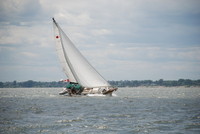
Who: James D Bissell (Jim) and Elizabeth Lusby (Beth)
Port: Halifax, Nova Scotia


